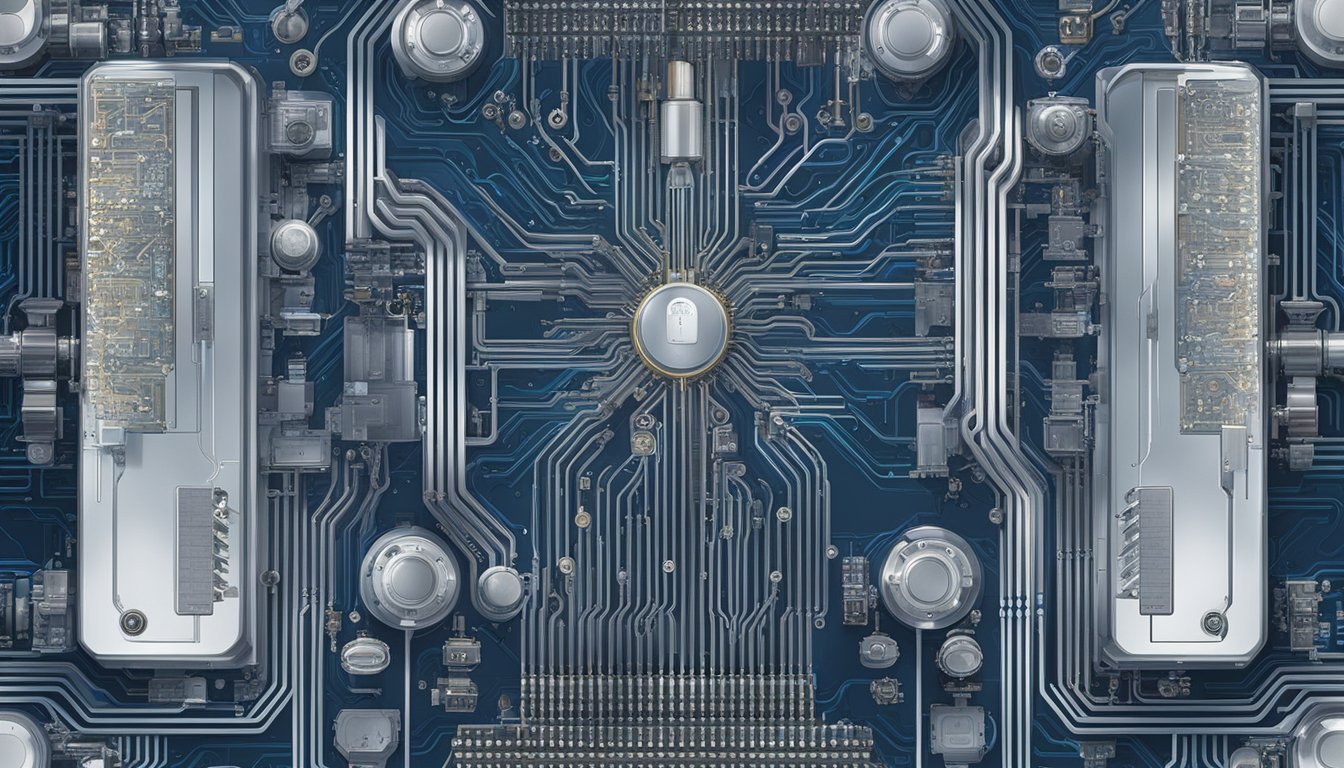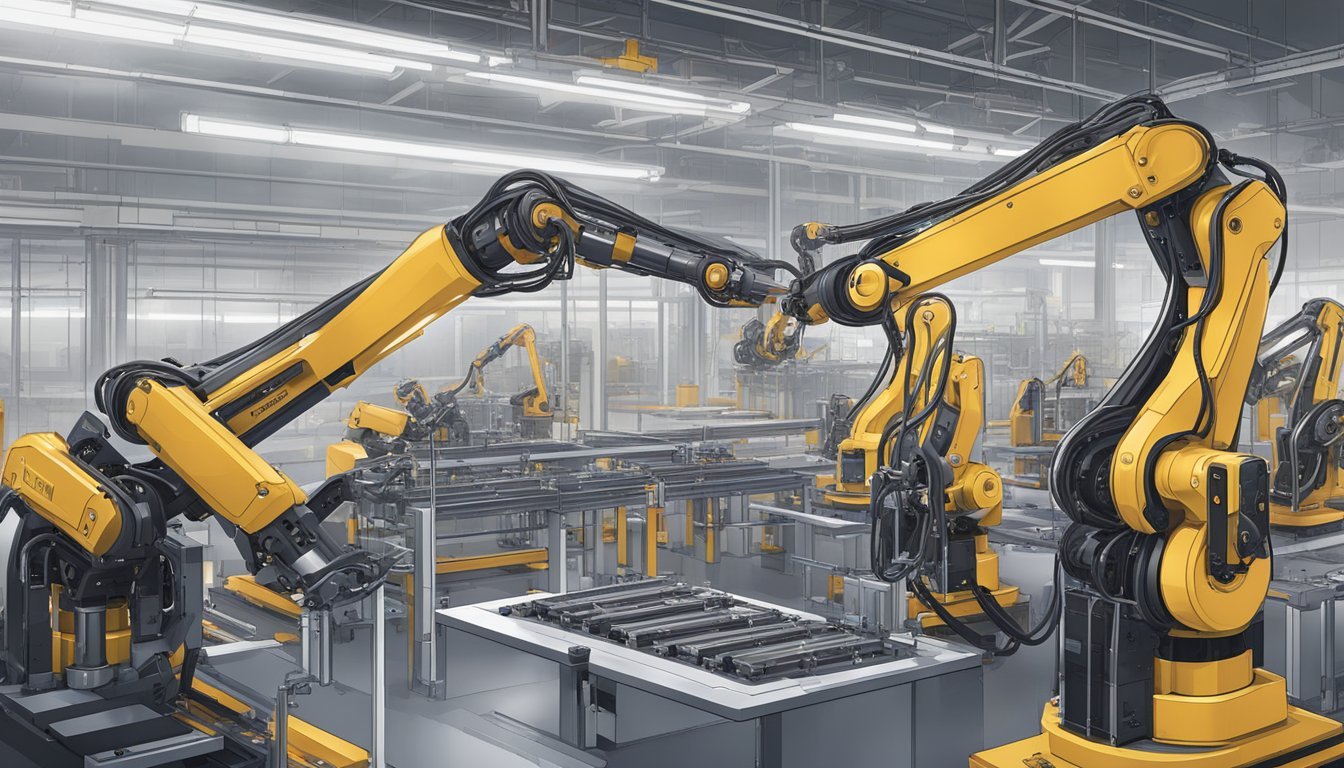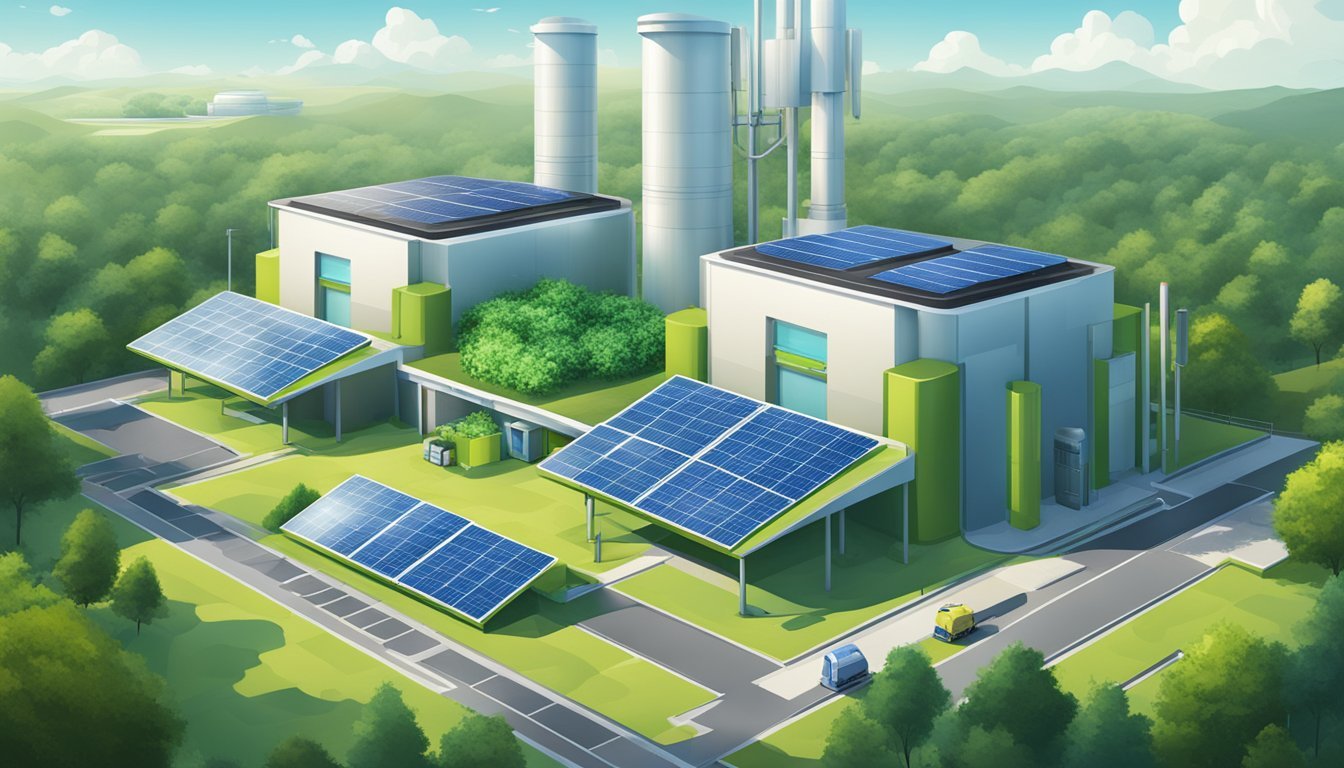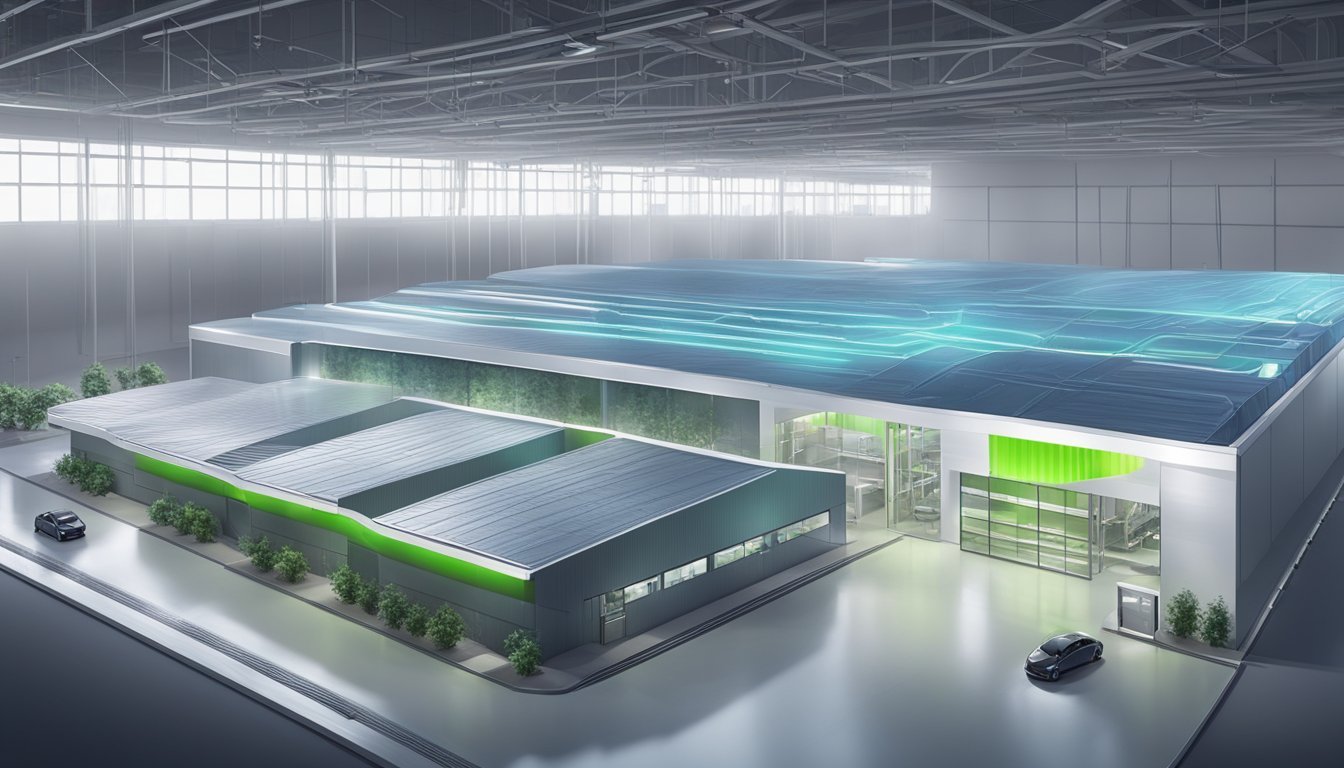Tesla Austin Cathode: $716M Expansion to Revolutionize Battery Production!
Tesla's ambitious expansion plans at Gigafactory Texas are taking shape. The electric vehicle manufacturer has filed for over $716 million in new construction projects at the Austin facility. These filings include plans for a battery cathode plant, signaling Tesla's commitment to vertical integration in battery production.
The addition of a cathode manufacturing facility at Gigafactory Texas will allow Tesla to produce a crucial component of electric vehicle batteries in-house. This move aligns with the company's strategy to control more aspects of its supply chain and reduce dependency on external suppliers. The cathode plant is part of a larger 1.4 million square foot expansion of the Austin site.
Tesla's investment in cathode production demonstrates its focus on advancing battery technology and scaling up manufacturing capabilities. By bringing cathode production under its own roof, the company aims to improve efficiency, reduce costs, and potentially enhance the performance of its electric vehicle batteries. This expansion reinforces Tesla's position as a leader in the electric vehicle industry and its commitment to innovation in battery technology.
Context of Tesla's Austin Presence
Tesla's Austin presence centers around its massive Gigafactory Texas, which has become a key production hub. The facility exemplifies Tesla's ambitious North American expansion strategy and growing influence in the automotive industry.
Significance of Gigafactory Texas
Gigafactory Texas serves as Tesla's main manufacturing facility in North America. The sprawling complex spans over 2,500 acres near Austin's airport. It produces the Model Y and is slated to manufacture the Cybertruck.
With over 20,000 employees, Giga Texas is the second-largest employer in the Austin region. The factory's economic impact extends beyond direct jobs, attracting suppliers and related businesses to the area.
Tesla continues investing in the site, filing permits for over $716 million in expansions. These include plans for a cathode production facility, further vertically integrating Tesla's supply chain.
Overview of Tesla's North American Expansion
Giga Texas represents a cornerstone of Tesla's North American growth strategy. The company aims to increase production capacity and reduce costs through localized manufacturing.
Tesla has leased over 1 million square feet of additional space in the Austin metro area. This includes facilities in nearby cities like Hutto, where the company is developing battery recycling capabilities.
Supplier clusters are forming around Giga Texas. Cities like Kyle, 25 miles south of Austin, have attracted Tesla suppliers such as Simwon North America and RK Logistics Group. This ecosystem strengthens Tesla's regional supply chain and production capabilities.
Specifics of the Austin Cathode Factory
Tesla's Austin cathode factory represents a significant step in the company's vertical integration strategy for battery production. This facility aims to produce critical cathode materials for Tesla's electric vehicle batteries, enhancing supply chain control and potentially reducing costs.
Project Cathode's Role
Project Cathode is Tesla's initiative to manufacture cathode materials in-house. The Austin facility will play a crucial role in Tesla's battery supply chain, producing key components for the 4680 battery cells. This project aims to reduce dependency on external suppliers and streamline the production process.
The cathode factory will focus on developing and producing advanced cathode materials. These materials are essential for improving battery performance, energy density, and longevity. By controlling the production of cathode materials, Tesla can potentially innovate faster and adapt more quickly to new battery technologies.
Capacity and Scale of the Cathode Facility
Tesla's cathode facility in Austin is expected to be a large-scale operation. The company has applied for permits to build a substantial industrial use facility adjacent to its existing Gigafactory Texas.
The exact production capacity has not been publicly disclosed. However, given Tesla's ambitious production goals for electric vehicles, the cathode factory is likely to be designed to support high-volume manufacturing.
This facility is expected to employ advanced automation and production techniques to achieve high efficiency and output. The scale of the operation will likely be significant enough to support Tesla's growing battery production needs across its vehicle and energy storage product lines.
Technology and Cathode Chemistry
Tesla's cathode factory will focus on producing advanced cathode materials using cutting-edge technology. The company has been working on improving cathode chemistry to enhance battery performance and reduce costs.
Key areas of focus include:
Nickel-rich cathodes for high energy density
Cobalt-free or low-cobalt formulations for sustainability
Silicon-based anodes for improved capacity
Tesla may also explore novel cathode chemistries and production methods at this facility. The company has shown interest in dry electrode technology, which could potentially reduce production costs and environmental impact.
The Austin cathode factory will likely incorporate Tesla's latest innovations in materials science and manufacturing processes. This could include advanced coating technologies, precise particle control, and innovative mixing techniques to optimize cathode performance.
Implications for Battery Production
Tesla's cathode facility in Austin represents a significant advancement in battery production capabilities. This development holds far-reaching implications for the company's manufacturing processes and product lineup.
Integration with 4680 Battery Cell Production
The new cathode plant will directly support Tesla's 4680 battery cell production. These larger format cells promise increased energy density and lower costs. By manufacturing cathodes on-site, Tesla can streamline its supply chain and reduce transportation expenses.
The co-location of cathode and cell production allows for tighter quality control. This integration enables rapid iterations on cathode formulations to optimize performance. Tesla can fine-tune the cathode composition to match specific vehicle requirements more efficiently.
Influence on Model Y and Cybertruck Manufacturing
Localized cathode production will accelerate Model Y and Cybertruck output at Giga Texas. Shorter supply lines mean faster production cycles and reduced inventory costs.
The cathode facility's proximity allows for just-in-time manufacturing strategies. This approach minimizes storage needs and improves production flexibility. Tesla can quickly adjust cathode specifications to meet changing demand for different vehicle models.
Custom cathode formulations tailored to each vehicle's needs become more feasible. This customization could lead to improved range and performance for both the Model Y and Cybertruck.
Battery Cell Supply and Demand
Tesla's in-house cathode production bolsters its battery cell supply chain. This vertical integration helps insulate the company from potential shortages or price fluctuations in the cathode market.
The facility's output can be scaled to meet growing demand for Tesla vehicles. As production ramps up, economies of scale will likely drive down battery costs further.
Excess cathode capacity could potentially be sold to other manufacturers. This move would position Tesla as a supplier in the broader EV industry, diversifying its revenue streams.
Innovation in Manufacturing Process
Tesla's Austin facility showcases cutting-edge advancements in battery and vehicle production. The company's focus on vertical integration and novel manufacturing techniques aims to boost efficiency and reduce costs.
Drive Unit and Powertrain Engineering
Tesla's Austin plant features state-of-the-art drive unit and powertrain engineering capabilities. The facility employs advanced robotics and automation to streamline production of electric motors and gearboxes.
Engineers utilize computer-aided design and simulation tools to optimize powertrain components for maximum performance and efficiency. The manufacturing process incorporates precision machining and assembly techniques to ensure tight tolerances and high quality.
Tesla's integrated approach allows for rapid iteration and improvements to drive unit designs. This enables the company to quickly implement upgrades and refinements across its vehicle lineup.
Advancements in Cell Test Lab
The Austin facility's cell test lab represents a significant leap forward in battery development and quality control. Advanced diagnostic equipment allows engineers to analyze cell performance under various conditions.
Automated testing systems can evaluate thousands of battery cells simultaneously, accelerating the development cycle. The lab employs artificial intelligence and machine learning algorithms to identify optimal cell chemistries and manufacturing parameters.
Rigorous thermal and electrical stress testing ensures the safety and longevity of Tesla's battery packs. The cell test lab's capabilities support the company's ongoing efforts to improve energy density and reduce battery costs.
Environmental Considerations and Initiatives
Tesla's Austin cathode plant faces scrutiny over its potential environmental impact. Concerns focus on water usage, pollution, and effects on nearby ecosystems.
Colorado River Project Impact
The planned battery cathode plant's proximity to the Colorado River raises concerns. Environmental groups worry about water consumption and potential contamination. Tesla's facility could affect local water supplies and aquatic habitats.
The company faces challenges in balancing production needs with ecosystem preservation. Critics argue the plant's location poses risks to river health and surrounding communities. Tesla must address these concerns to gain public trust and regulatory approval.
Regulatory Compliance and Environmental Quality
Tesla's environmental record at its Austin facility has drawn attention from regulators. The Texas Commission on Environmental Quality has issued warnings related to the company's activities. These concerns include air quality violations and proper waste management practices.
The company needs to improve its compliance with environmental regulations. Tesla must address issues such as emissions control and hazardous material handling. Implementing robust environmental management systems is crucial for the cathode plant's operation.
Tesla's ability to meet or exceed regulatory standards will be critical for the project's success. The company's environmental initiatives and transparency will play key roles in community acceptance.
Partnerships and Material Sourcing
Tesla's battery production in Austin relies on strategic partnerships and carefully planned material sourcing. The company has forged alliances with key suppliers and implemented innovative strategies to secure critical battery materials.
Relationship with Panasonic and Other Suppliers
Tesla and Panasonic have maintained a long-standing partnership for battery production. At the Austin facility, this collaboration continues with Panasonic supplying crucial components. Tesla has also expanded its supplier network, sourcing cathode coils from two Chinese manufacturers since late 2023. These coils are shipped to Giga Texas for 4680 battery assembly, demonstrating Tesla's global supply chain approach.
The company has partnered with BASF through Cellforce Group, a joint venture with Porsche. This collaboration aims to develop high-performing lithium-ion batteries and establish a closed-loop manufacturing process. BASF provides high-energy HED™ NCM cathode active materials, contributing to Tesla's battery innovation efforts.
Lithium and Nickel Sourcing Strategies
Tesla has implemented robust strategies to secure lithium and nickel, two critical battery materials. The company signed an agreement with Piedmont Lithium for a multi-year supply of spodumene concentrate, essential for lithium production. This deal helps ensure a steady lithium supply for Tesla's battery manufacturing needs.
For nickel, Tesla partnered with Talon Metals, securing a six-year nickel concentrate supply from the Tamarack mine in Minnesota. This agreement aligns with Tesla's goal to source materials responsibly and reduce supply chain risks. The company also explores other nickel sources globally to diversify its supply and meet growing demand.
Tesla continues to invest in recycling technologies, working with partners like Redwood Materials to create a closed-loop battery material supply chain. This approach aims to reduce reliance on newly mined materials and improve sustainability in battery production.
Economic and Community Impact
Tesla's Gigafactory in Austin, Texas has generated substantial economic activity and job growth for the region. The facility has exceeded initial employment projections while also benefiting from local tax incentives.
Job Creation and Local Economy
Tesla's Austin Gigafactory has created over 15,000 jobs in Travis County, surpassing the company's initial promise of 5,000 positions. At least 50% of these jobs were allocated to Travis County residents, fulfilling a key commitment to the local community. The factory paid $469 million in wages during 2022 alone, injecting significant funds into the local economy.
Construction of the facility provided additional employment, with a peak workforce of 5,000-6,000 workers. The economic ripple effect extends beyond direct employment, as suppliers and related businesses have also expanded their operations in the area to support Tesla's production needs.
Tax Credits and Incentives for Tesla
Travis County offered Tesla substantial tax incentives to attract the Gigafactory project. In exchange for job creation and local hiring commitments, Tesla received property tax breaks. The agreement stipulates that all jobs at the factory must pay at least $15 per hour.
The total investment in the Gigafactory and related facilities is expected to exceed $10 billion. Tesla has already invested $5.8 billion in the main factory building. These investments have led to increased economic activity, with Tesla's presence bringing an estimated $2 billion in economic impact to the region.
Leadership and Vision
Tesla's cathode production efforts in Austin are guided by visionary leaders who have shaped the company's battery strategy. These executives have played crucial roles in advancing Tesla's position in battery technology and manufacturing.
Elon Musk's Role and Contributions
Elon Musk, Tesla's CEO, has been instrumental in driving the company's battery innovations. He has consistently emphasized the importance of vertical integration in battery production. Musk's vision led to the announcement of Tesla's plans to manufacture its own cathodes during the 2020 Battery Day event.
His leadership has pushed for cost reductions and performance improvements in battery technology. Musk has also been a strong advocate for localizing the battery supply chain, which aligns with the decision to build a cathode facility in Austin.
Drew Baglino's Insights on Battery Day
Drew Baglino, Tesla's Senior Vice President of Engineering, provided key insights during the Battery Day presentation. He detailed the company's strategy for in-house cathode production. Baglino explained the benefits of this approach, including reduced costs and improved sustainability.
He highlighted plans for a 60 GWh cathode production facility at Gigafactory Texas. Baglino emphasized the importance of innovations in cathode materials, such as the use of lithium iron phosphate (LFP) batteries. These advancements aim to enhance battery recyclability and reduce reliance on expensive materials.
Future Developments and Prospects
Tesla's Austin facility is poised for significant growth in production capacity and technological advancements. The company's plans include new vehicle models and ambitious expansion projects.
Upcoming Models and Production Goals
Tesla aims to ramp up production of existing models at the Austin Gigafactory. The Model Y, currently manufactured at the site, will see increased output. Tesla plans to introduce new vehicle models at the facility, potentially including the highly anticipated Cybertruck.
The company has set aggressive production targets for the coming years. Tesla's goal is to reach an annual production capacity of 500,000 vehicles at the Austin plant. This ambitious target will require significant improvements in manufacturing efficiency and automation.
Expansion Plans and Future Sites
Tesla has filed for a $716 million expansion at Giga Texas. This project will add 1.4 million square feet to the existing facility. A key component of this expansion is the construction of a cathode plant, crucial for battery production.
The "Project Cathode" will enable Tesla to manufacture battery components on-site, reducing costs and improving supply chain efficiency. This vertical integration aligns with Tesla's strategy to control more aspects of its production process.
Future plans may include additional production lines and research facilities. Tesla continues to scout for new locations globally to expand its manufacturing footprint and meet growing demand for electric vehicles.









